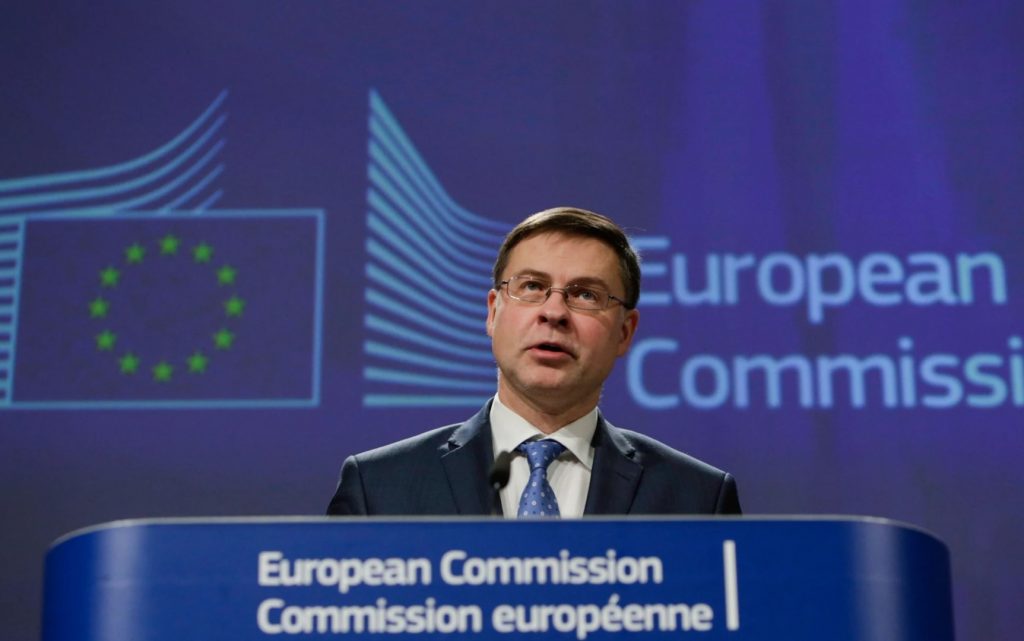According to the 2020 Convergence Report published by the European Commission (EC) on Wednesday, Romania currently does not meet any of the four economic criteria needed to adopt the euro.
Romania does not meet several criteria required for the country to be able to adopt the euro: price stability, public finances, exchange rate stability, and long-term interest rates.
The report covers the seven non-euro area Member States that have made a legal commitment to adopt the euro: Bulgaria, the Czech Republic, Croatia, Hungary, Poland, Romania and Sweden. Convergence reports must be drawn up every two years, regardless of possible accessions to the euro area in progress.
European Commission: The government deficit in Romania will increase to 11.4% in 2021 if current policies are maintained
The average inflation rate in Romania in the 12 months ending in March 2020 was 3.7%, well above the reference value of 1.8%, and it is estimated that it will remain well above the reference value in the coming months.
It is also shown in the EC report that Romania does not meet the criterion regarding its public finances. As a consequence of the violation of the deficit ceiling in 2019, the Council opened the excessive deficit procedure for Romania on April 4, 2020, indicating 2022 as the deadline for correcting the excessive deficit. The general government deficit as a percentage of the GDP increased from 2.9% in 2018 to 4.3% in 2019. According to the European Commission’s spring forecast, if the current policies are maintained, this figure will further increase to 9.2% in 2020 and to about 11.4% in 2021.
The EC report also highlights that Romania does not meet the criterion pertaining to long-term interest rates either. In the 12 months preceding March 2020, the average long-term interest rate in Romania was 4.4%, above the reference value of 2.9%.
Six out of the seven Member States meet two criteria
According to the report, Croatia and Sweden meet the criterion for price stability, while all the countries except Romania (Bulgaria, the Czech Republic, Croatia, Hungary, Poland and Sweden) meet both criteria for public finances and long-term interest rates.
But none of the seven Member States meets the criterion regarding exchange rate stability, as none of them is a member of the Exchange Rate Mechanism (ERM II).
Impact of the coronavirus on the report was limited
The Commission also examined such additional factors mentioned in the Treaty, which should be taken into account when assessing the sustainability of the convergence. This analysis shows that non-euro area Member States are generally well integrated economically and financially into the EU. However, some still face macroeconomic vulnerabilities and problems related to their business environment and institutional framework.
The communiqué additionally states that the impact of the coronavirus pandemic on the results in the report was limited, as most of the historical data used in the report relate to the period before the outbreak of the crisis.

European Commission members’ opinion about the report
“Today’s convergence report shows encouraging progress by some countries, although there are still several milestones to pass before they can join the euro area. As ever, the Commission is ready to support these Member States. One significant stepping-stone on this path is joining the ERM II, which Croatia and Bulgaria are currently preparing to do. We welcome the efforts of both countries towards it,” said Executive Vice-President of the European Commission Valdis Dombrovskis, who is responsible for an Economy that Works for People.
The Commissioner for the Economy, Paolo Gentiloni, emphasized that as a result of the unequal nature of the coronavirus recession in recent months, the EC had focused on combating economic disparities within the euro area and, more generally, in the single market.
“Today we take stock of convergence towards euro area membership for seven Member States. It’s a necessarily rigorous process because an enlarged euro area must also be a stronger euro area. It remains important that countries also work to ensure real convergence towards higher levels of productivity and prosperity – not least through the future-oriented reforms and investments we wish to support through Next Generation EU,” he added. (Agerpres)
The four economic convergence criteria (also known as the “Maastricht criteria”):
1. Price stability: The inflation rate cannot be higher than 1.5 percentage points above the rate of the 3 best-performing member states.
2. Sound and sustainable public finances: Government deficit cannot be higher than 3% of GDP. Government debt cannot be higher than 60% of GDP.
3. Exchange-rate stability: The candidate has to participate in the exchange rate mechanism (ERM II) for at least two years without strong deviations from the ERM II central rate and without devaluing its currency’s bilateral central rate against the euro in the same period.
4. Long-term interest rates: The long-term interest rate should not be higher than 2 percentage points above the rate of the three best-performing member states in terms of price stability.
Title image: The symbol of the Euro in Frankfurt, Germany, in front of the European Central Bank (ECB). (Photo: (Hannelore Foerster/Getty Images)